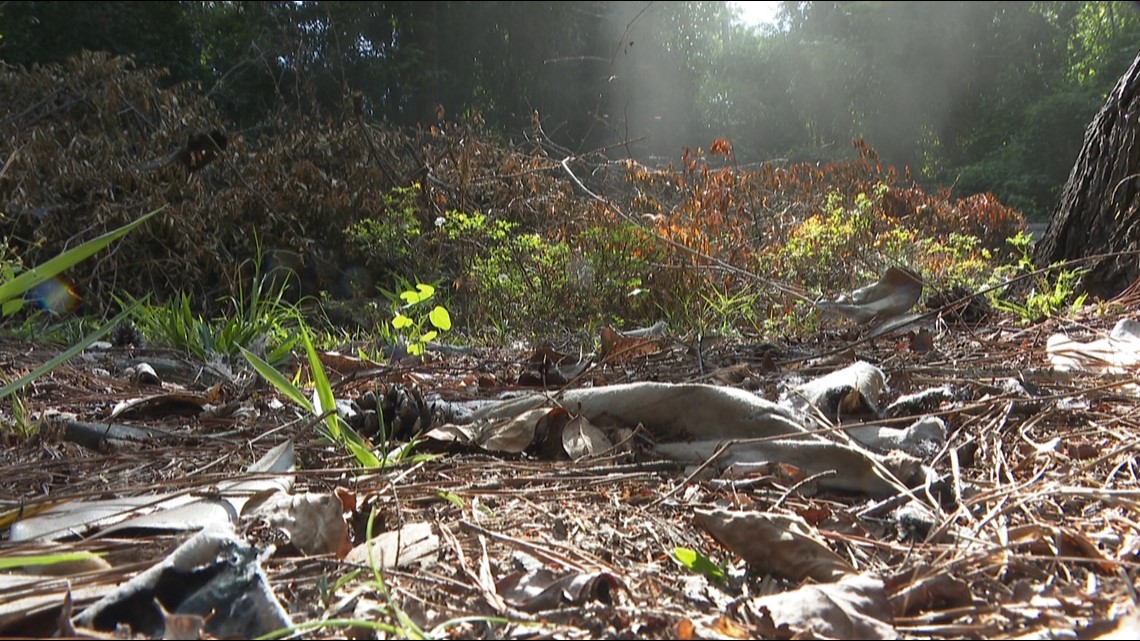
‘); if(!WVM.IS_STREAMING){ $videoEl.append(‘‘ + ‘‘ + ‘‘); } setTimeout(function(){ $(‘.mute-overlay’).on(‘touchstart click’, function(e){ if(e.handled === false) return; e.stopPropagation(); e.preventDefault(); e.handled = true; player.muted(false); //console.log(“volumee ” + WVM.activePlayer.volume()); $(this).hide(); $(this).css(‘display’, ‘none’); var currentTime = player.currentTime(); if(currentTime 0){ if(deviceName == ‘desktop’){ WVM.VIDEO_TOP = $(‘#media-container-‘ + videoId).offset().top; }else{ WVM.VIDEO_TOP = $(‘#media-container-‘ + videoId).offset().top – $(‘.next-dropdown-accordion’).height(); } if(deviceName == ‘desktop’){ WVM.VIDEO_HEIGHT = $(‘#html5-video-‘ + videoId).outerHeight(); }else{ WVM.VIDEO_HEIGHT = $(‘#html5-video-‘ + videoId).outerHeight(); } WVM.CONTAINER_HEIGHT = $(‘#media-container-‘ + videoId).height(); //console.log(“container height: ” + WVM.CONTAINER_HEIGHT); $(window).on( “resize”, function() { if(deviceName == ‘desktop’){ WVM.VIDEO_TOP = $(‘#media-container-‘ + videoId).offset().top; }else{ WVM.VIDEO_TOP = $(‘#media-container-‘ + videoId).offset().top – $(‘.next-dropdown-accordion’).height(); } if(deviceName == ‘desktop’){ WVM.VIDEO_HEIGHT = $(‘#html5-video-‘ + videoId).outerHeight(); }else{ WVM.VIDEO_HEIGHT = $(‘#html5-video-‘ + videoId).outerHeight(); } WVM.CONTAINER_HEIGHT = $(‘#media-container-‘ + videoId).height(); console.log(“container height: ” + WVM.CONTAINER_HEIGHT); }); //console.log(“VIDEOTOP: ” + WVM.VIDEO_TOP); //console.log(“VIDEOHEIGHT: ” + WVM.VIDEO_HEIGHT); $(window).on( “scroll”, function() { if(!WVM.IS_FLOATING){ if(deviceName == ‘desktop’){ WVM.CONTAINER_HEIGHT = $(‘#media-container-‘ + videoId).height(); }else{ WVM.CONTAINER_HEIGHT = $(‘#media-container-‘ + videoId + ” .hlsvideo-wrapper”).height() + $(‘#media-container-‘ + videoId + ” .now-playing-container”).height(); } } //var top = $(‘#media-container-‘ + videoId).offset().top; var offset = WVM.VIDEO_TOP + (WVM.VIDEO_HEIGHT / 2); var offsetBack = WVM.VIDEO_TOP; var changed = false; //console.log(“VIDEOTOP: ” + WVM.VIDEO_TOP); //console.log(“VIDEOHEIGHT: ” + WVM.VIDEO_HEIGHT); //console.log(“scrolltop ” + $(window).scrollTop()); //only float if playing var isPlaying = WVM[‘player_state’ + videoId][‘IS_PLAYING’] || WVM[‘player_state’ + videoId][‘AD_IS_PLAYING’]; if(isPlaying){ $(‘.vjs-loading-spinner’).hide(); } var offsetFloatAd = 99999999; if(deviceName == ‘desktop’ && $(‘#float_anchor’).length > 0){ offsetFloatAd = $(‘#float_anchor’).offset().top – WVM.VIDEO_HEIGHT; //console.log(“float anchor offset top ” + offsetFloatAd); } if($(window).scrollTop() > offset && isPlaying && !WVM[‘player_state’ + videoId][‘CANCEL_FLOATING’]){ $(‘#media-placeholder-‘ + videoId).height(WVM.CONTAINER_HEIGHT); $(‘#media-placeholder-‘ + videoId).css(‘display’, ‘block’); if(!WVM.IS_FLOATING){ changed = true; } WVM.IS_FLOATING = true; $(‘#media-container-‘ + videoId).addClass(‘floating-video’); var sWidth = window.innerWidth || document.documentElement.clientWidth; var sHeight = window.innerHeight || document.documentElement.clientHeight; if(sWidth > 900 && WADS.IS_STICKING){ $(‘#media-container-‘ + videoId).addClass(‘desktop-ad-is-sticky’); } else if(WADS.IS_STICKING){ if(!TOP_AD_VIEWED){ $(‘#media-container-‘ + videoId).addClass(‘mobile-ad-is-sticky’); }else{ $(‘#media-container-‘ + videoId).addClass(‘mobile-ad-is-sticky-noad’); } } else if(!WADS.IS_STICKING){ if(!TOP_AD_VIEWED){ $(‘#media-container-‘ + videoId).removeClass(‘desktop-ad-is-sticky’); }else{ $(‘#media-container-‘ + videoId).addClass(‘desktop-ad-is-sticky-noad’); } } //set right var sWidth = window.innerWidth || document.documentElement.clientWidth; var sHeight = window.innerHeight || document.documentElement.clientHeight; if(deviceName == ‘desktop’ || sWidth > 900){ var leftPos2 = $(‘aside’).get(0).getBoundingClientRect().left; var leftPos = $(‘aside’).offset().left ; $(‘#media-container-‘ + videoId).css(‘left’, leftPos + “px”); var newWidth = Math.floor(sWidth / 3.5); $(‘#media-container-‘ + videoId).css(‘width’, newWidth + “px”); } else{ $(‘#media-container-‘ + videoId).css(‘width’, “100% !important”); $(‘#media-container-‘ + videoId + ‘ .now-playing-container’).css(‘display’, ‘block’); $(‘#media-container-‘ + videoId + ‘ .next-dropdown-accordion’).css(‘display’, ‘block’); } //floating-video $(‘#media-container-‘ + videoId + ” ” + ‘.page-carousel-wrapper’).hide(); setTimeout(function(){ var hWrapper = $(‘.floating-video .hlsvideo-wrapper’).height(); var npWidth = $(‘.floating-video .now-playing-container’).height(); var ndWidth = $(‘.floating-video .next-dropdown-header’).height() + 20; var scrollerHeight = sHeight – (hWrapper + npWidth + ndWidth); scrollerHeight = 180; //scrollerHeight = parseInt(scrollerHeight * 0.5); if(WVM.device_name == ‘desktop’){ $(‘#media-container-‘ + videoId + ” ” + ” .mobile-list-videos”).height(scrollerHeight); } }, 100); }else if($(window).scrollTop() 0){ var container = document.querySelector(‘#page-carousel-‘ + fullVideoId); imagesLoaded( container, function() { var screenWidth = window.innerWidth || document.documentElement.clientWidth; if(screenWidth > 850){ WVM.IS_DESKTOP = true; $(‘#page-carousel-‘ + fullVideoId + ‘ .page-carousel-lg-slides’).css(‘display’, ‘block’); WVM[‘player_settings’ + fullVideoId].slider = $(‘#page-carousel-‘ + fullVideoId).bxSlider({ maxSlides: 4, minSlides: 4, slideWidth: 305, infiniteLoop: false, hideControlOnEnd: true, useCSS: true, pager: false, slideMargin: 15, moveSlides: 1, nextText: ‘‘, prevText: ‘‘ }); }else{ WVM.IS_DESKTOP = false; $(‘.page-carousel-wrapper’).css(‘display’, ‘block’); } }); } }; WVM.setupToggleButton = function(fullVideoId, player){ if($(‘.nextplay-switch-‘ + fullVideoId).length > 0){ new DG.OnOffSwitchAuto({ cls:’.nextplay-switch-‘ + fullVideoId, height: 24, trackColorOn:’#F9F9F9′, trackColorOff:’#222’, textColorOn: ‘#222’, textColorOff: ‘#222′, textOn:’On’, textOff:’Off’, listener:function(name, checked){ var theVal = 1; if(!checked){ theVal = 0; } $.ajax({ url: ‘/ajax/update_autoplay_video/’, data: { autoplay_on: theVal }, type: ‘POST’, dataType: ‘json’, success: function(data) { WVM[‘player_settings’ + fullVideoId][‘autoplay’] = checked; }, error : function(){ console.log(“Error loading video”); } }); } }); } }; WVM.setupAccordionButton = function(fullVideoId){ var deviceName = ‘desktop’; $(‘#next-dropdown-accordion-button-‘ + fullVideoId).on(‘click’, function(){ if($(this).find(‘i’).hasClass(‘fa-chevron-up’)){ //hide $(this).find(‘i’).removeClass(‘fa-chevron-up’); $(this).find(‘i’).addClass(‘fa-chevron-down’); if(deviceName == “desktop” && !$(‘#media-container-‘ + fullVideoId).hasClass(‘floating-video’)){ $(‘#media-container-‘ + fullVideoId + ” ” + ‘.page-carousel-wrapper’).slideUp(); $(‘#media-container-‘ + fullVideoId + ” ” + ‘.mobile-list-wrapper’).hide(); }else{ $(‘#media-container-‘ + fullVideoId + ” ” + ‘.mobile-list-wrapper’).slideUp(); $(‘#media-container-‘ + fullVideoId + ” ” + ‘.page-carousel-wrapper’).hide(); } var currVideoId = WVM[‘player_state’ + fullVideoId][‘VIDEO_ID’]; var nextVideoId = WVM.getNextPlaylistIndex(currVideoId); //playerId, mediaId, fieldName var myTitle = WVM.getPlaylistData(fullVideoId, nextVideoId, ‘noprefixtitle’); //alert(“Getting title ” + myTitle); $(‘#video-slider-nexttitle’ + fullVideoId).css(‘display’, ‘inline’); $(‘#video-slider-nexttitle’ + fullVideoId).html(myTitle); }else{ //expand $(this).find(‘i’).addClass(‘fa-chevron-up’); $(this).find(‘i’).removeClass(‘fa-chevron-down’); $(‘#media-container-‘ + fullVideoId + ” ” + ‘.mobile-list-wrapper’).css(‘display’, ‘block’); if(deviceName == “desktop” && !$(‘#media-container-‘ + fullVideoId).hasClass(‘floating-video’)){ $(‘#media-container-‘ + fullVideoId + ” ” + ‘.page-carousel-wrapper’).css(‘display’, ‘block’); $(‘#media-container-‘ + fullVideoId + ” ” + ‘.page-carousel-wrapper’).slideDown(); $(‘#media-container-‘ + fullVideoId + ” ” + ‘.mobile-list-wrapper’).hide(); if(!WVM.player_state197482[‘CAROUSEL_INIT’]){ WVM.setupCarousel(fullVideoId); } }else{ $(‘#media-container-‘ + fullVideoId + ” ” + ‘.mobile-list-wrapper’).slideDown(); $(‘#media-container-‘ + fullVideoId + ” ” + ‘.page-carousel-wrapper’).hide(); if(!$(‘#media-container-‘ + fullVideoId).hasClass(‘floating-video’)){ if(!WVM.player_state197482[‘CAROUSEL_INIT’]){ WVM.setupCarousel(fullVideoId); } } } $(‘#video-slider-nexttitle’ + fullVideoId).css(‘display’, ‘none’); } }); var currVideoId = WVM[‘player_state’ + fullVideoId][‘VIDEO_ID’]; //console.log(“current Video ” + currVideoId); var nextVideoId = WVM.getNextPlaylistIndex(currVideoId); var myTitle = WVM.getPlaylistData(fullVideoId, nextVideoId, ‘noprefixtitle’); //console.log(“setting title ” + myTitle); $(‘#video-slider-nexttitle’ + fullVideoId).css(‘display’, ‘inline’); $(‘#video-slider-nexttitle’ + fullVideoId).html(myTitle); }; WVM.sendbeacon = function(action, nonInteraction, value, eventLabel) { var eventCategory = ‘Video’; if (window.ga) { //console.log(“sending action: ” + action + ” val: ” + value + ” label ” + eventLabel); ga(‘send’, ‘event’, { ‘eventCategory’: eventCategory, ‘eventAction’: action, ‘eventLabel’: eventLabel, ‘eventValue’: value, ‘nonInteraction’: nonInteraction }); } }; WVM.getNextPlaylistIndex = function(mediaId, returnArrayIndex){ var currId = null; if(mediaId == null){ return null; } for(var x =0; x 20){ if(fullDuration > 1 && ((fullDuration – fullCurrent) > 1) && !$(‘.vjs-loading-spinner’).hasClass(‘badspinner’)){ console.log(“hiding spinner”); $(‘.vjs-loading-spinner’).addClass(‘badspinner’); } } var duration_time = Math.floor(this.duration()); //this is a hack because the end video event is not firing… var current_time = Math.floor(this.currentTime()); if ( current_time > 0 && ( fullCurrent >= (fullDuration – 10) )){ var currId = playerState.VIDEO_ID; var newMediaId = WVM.getNextPlaylistIndex(currId); //if(playerSettings.autoplay_next && newMediaId){ if(newMediaId){ if(‘desktop’ == “iphone” && playerState.AD_ERROR){ console.log(“skipped timeupdate end”); }else{ WVM.load_video(newMediaId, true, playerState.ORIGINAL_ID); } } } if(!playerState.START_SENT){ WVM.sendbeacon(‘start’, true, playerState.VIDEO_ID, playerState.VIDEO_TITLE); playerState.START_SENT = true; } var currentTime, duration, percent, percentPlayed, _i; currentTime = Math.round(this.currentTime()); duration = Math.round(this.duration()); percentPlayed = Math.round(currentTime / duration * 100); for (percent = _i = 0; _i = percent && __indexOf.call(playerState[‘PERCENTS_TRACKED’], percent) 0) { playerState[‘PERCENTS_TRACKED’].push(percent); } } } }); //player.off(‘ended’); player.on(‘ended’, function(){ console.log(“ended”); playerState.IS_PLAYING = false; WVM.sendbeacon(“complete”, true, playerState.VIDEO_ID, playerState.VIDEO_TITLE); var currId = playerState.VIDEO_ID; var newMediaId = WVM.getNextPlaylistIndex(currId); //if(playerSettings.autoplay_next && newMediaId){ if(newMediaId){ WVM.load_video(newMediaId, true, playerState.ORIGINAL_ID); }else{ console.log(“Playlist complete (no more videos)”); } }); //player.off(‘adserror’); player.on(‘adserror’, function(e){ //$(‘#ima-ad-container’).remove(); WVM.lastAdRequest = new Date().getTime() / 1000; console.log(e); console.log(“ads error”); var errMessage = e[‘data’][‘AdError’][‘l’]; playerState.AD_IS_PLAYING = false; playerState.IS_PLAYING = false; // && errMessage == ‘The VAST response document is empty.’ if(!playerState.AD_ERROR){ var dTime = new Date().getTime(); WVM.firstPrerollTagUrl = WVM.getFirstPrerollUrl(); console.log(“calling backup ad tag url: ” + WVM.firstPrerollTagUrl); WVM.activePlayer.ima.changeAdTag(WVM.firstPrerollTagUrl + “?” + dTime); WVM.activePlayer.ima.requestAds(); //WVM.activePlayer.src({ // src: masterSrc, // type: ‘video/mp4’ //}); //WVM.firstPrerollTagUrl = “”; } playerState.AD_ERROR = true; }); //player.off(‘error’); player.on(‘error’, function(event) { if (player.error().code === 4) { player.error(null); // clear out the old error player.options().sources.shift(); // drop the highest precedence source console.log(“now doing src”); console.log(player.options().sources[0]); player.src(player.options().sources[0]); // retry return; } }); //player.off(‘volumechange’); player.on(‘volumechange’, function(event) { console.log(event); var theHeight = $(‘#media-container-‘ + playerState.ORIGINAL_ID + ‘ .vjs-volume-level’).css(‘height’); var cssVolume = 0; if(theHeight){ cssVolume = parseInt(theHeight.replace(‘%’, ”)); } var theVolume = player.volume(); if(theVolume > 0.0 || cssVolume > 0){ $(‘#media-container-‘ + playerState.ORIGINAL_ID + ‘ .mute-overlay’).css(‘display’, ‘none’); }else{ $(‘#media-container-‘ + playerState.ORIGINAL_ID + ‘ .mute-overlay’).css(‘display’, ‘block’); } }); WVM.reinitRawEvents(playerState.ORIGINAL_ID); setInterval(function(){ WVM.reinitRawEvents(playerState.ORIGINAL_ID); }, 2000); } if(!WVM.rawCompleteEvent){ WVM.rawCompleteEvent = function(e){ var playerState = WVM[‘player_state197482’]; }; } if(!WVM.rawTimeupdateEvent){ WVM.rawTimeupdateEvent = function(e){ var playerState = WVM[‘player_state197482’]; var rawVideoElem = document.getElementById(‘html5-video-‘ + playerState[‘ORIGINAL_ID’] + ‘_html5_api’); var fullCurrent = rawVideoElem.currentTime * 1000; var fullDuration = rawVideoElem.duration * 1000; var current_time = Math.floor(rawVideoElem.currentTime); console.log(“raw timeupdate: ” + fullCurrent + ” out of ” + fullDuration); if ( current_time > 0 && ( fullCurrent >= (fullDuration – 50) )){ var currId = playerState.VIDEO_ID; var newMediaId = WVM.getNextPlaylistIndex(currId); if(newMediaId){ console.log(“loading new video from rawtimeupdate”); WVM.load_video(newMediaId, true, playerState.ORIGINAL_ID); } } if(!$(‘.vjs-loading-spinner’).hasClass(‘badspinner’)){ $(‘.vjs-loading-spinner’).addClass(‘badspinner’) } }; } WVM.reinitRawEvents = function(playerId){ var playerState = WVM[‘player_state’ + playerId]; var rawVideoElem = document.getElementById(‘html5-video-‘ + WVM[‘player_state’ + playerId][‘ORIGINAL_ID’] + ‘_html5_api’); //COMPLETE EENT if( WVM[‘player_state’ + playerId].COMPLETE_EVENT){ rawVideoElem.removeEventListener(‘ended’, WVM.rawCompleteEvent, false); } rawVideoElem.addEventListener(‘ended’, WVM.rawCompleteEvent, false); //TIME UPDATE EVENT if( WVM[‘player_state’ + playerId].TIMEUPDATE_EVENT){ rawVideoElem.removeEventListener(‘ended’, WVM.rawTimeupdateEvent, false); } rawVideoElem.addEventListener(‘ended’, WVM.rawTimeupdateEvent, false); WVM[‘player_state’ + playerId].COMPLETE_EVENT = true; WVM[‘player_state’ + playerId].TIMEUPDATE_EVENT = true; };
GREEN BAY, Wis. (CBS 58) — Matt LaFleur didn’t want to give us his full thoughts on this condensed schedule — but said it’s like preparing for a Thursday game. His quarterback had a little fun at his expense with the adjusted schedules.
“Coaches are creatures of habit, even more than players. Anytime there’s a minute adjustment to the schedule. It throws them all out of whack,” said quarterback Aaron Rodgers.
The schedule is condensed no doubt. A lot of work to get done here before leaving Thursday.
But the team will practice Friday as well and while being focused on the task at hand — beating the Giants — hopefully get a chance to explore just a little bit.
“We’re all excited. I think the reason I said I want to go early is just to experience a little bit of that culture. Be able to get out, see some sites, interact with fans. Go to a pub, have Guinness or whatever the local brew is,” said Rodgers.
“I feel like Aaron has some good connections over there, so I’m going to try to use the wide receiver card. Tag along with him and do some activities,” said wide receiver Allen Lazard. “Being able to play in another country, travel across the world is something I’m pretty grateful for.”
“I’m excited to be a part of it, should be a cool new thing. After 16 years, you don’t get a ton of new experiences,” said kicker Mason Crosby. “This should be a fun one.”
“I trust our guys. I think they’ll make wise decisions,” said head coach Matt LaFleur. “I expect us to play at a high level on Sunday.”
Sleep was a topic as well — from his own international travel Rodgers says he has some tricks he’s sharing with teammates.
Share this article:



/cloudfront-us-east-1.images.arcpublishing.com/gray/3DSYWP2AIZAEDBKCJ5FNDCLSNA.jpg)

